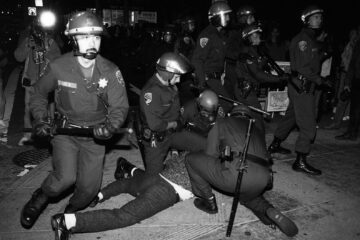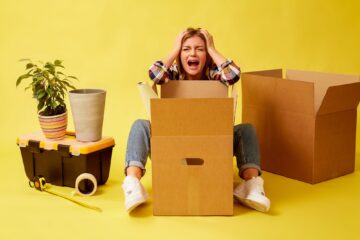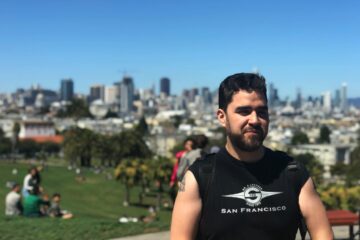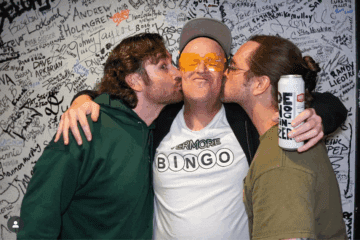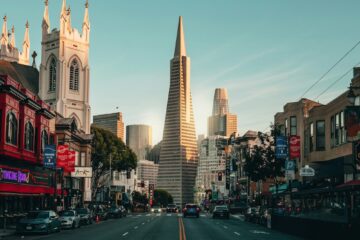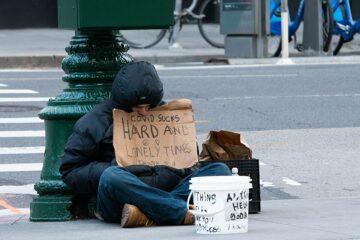What The City’s New Speed Cameras Say About San Francisco Drivers
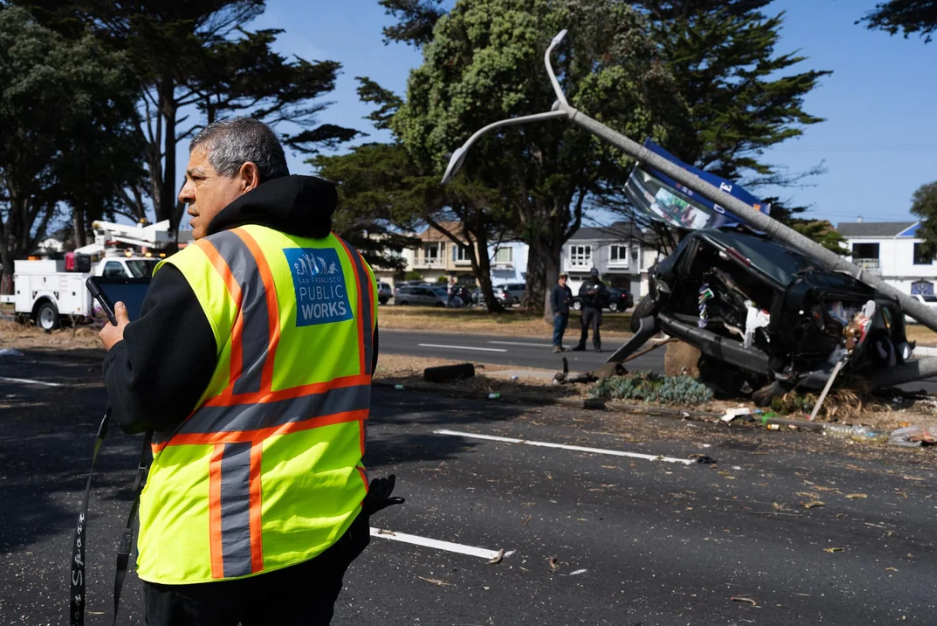
Per the San Francisco Chronicle, “speed cameras caught nearly 100,000 violators in May, roughly triple the number in April.” A reported thirty-three cameras were live across the city this time last month, some having been active since April. One on Geneva Avenue between Prague Street and Brookdale Avenue captured on average 1,779 violations per day. Those drivers, as well as others caught speeding, will receive warnings at the address registered to their vehicle. Motorists have until August 5 to lighten their lead feet before incurring not warnings, but moving violations.
San Francisco’s new camera installations send mixed messages. For one, it suggests that SFPD cannot keep up with the city’s chronic speed demons and needs help catching them. They could also be viewed as a statement on the fed-upedness of a community sometimes literally overrun with dangerous drivers. But I wonder if/how many others made the following observation. Could the cameras have inadverntently revealed the culprit behind the city’s egregious pedestrian mortality rate?
The problem isn’t driving, it’s speeding.
What kills isn’t necessarily the car, but the speed at which it hits you.
If anyone can attest to the reckless habits of SF motorists, it’s the city’s pedestrians. “Every 2.89 hours a driver hurts someone in San Francisco with their motor vehicle.” (Transpomaps) So far in 2025, drivers have killed nine people on city streets and sidewalks. Residents are tired of deadly incidents claiming their friends and relatives, and City Hall knows it. Last week, SFMTA disabled their Residential Traffic Calming Program, a sophisticated complaint line for frustrated residents near problematic, fatal intersections.
Far and wide, San Franciscans are talking about just how dangerous taking a walk has become around here. These cameras may end up proving why, and according to Mayor Daniel Lurie, the crackdown is intentional.
“We’re taking action to improve public safety across San Francisco, and public safety includes traffic safety,” Mayor Lurie told the Chronicle.
SEE ALSO: Where Most Pedestrians Get Run Over In San Francisco
It isn’t much of a jump to assume speedy drivers are largely responsible for the city’s pedestrian fatalities. By the end of May 2025, cameras captured 99,730 motorists going more than ten over the speed limit. SFMTA calls this a “staggering increase” compared to April, when the first round of cameras caught nearly 32,000 offenders. They attribute the sharp rise in May to an expansion from eighteen to thirty surveillance locations. Many cameras catch between 100–200 offenders daily, with some locations documenting over 1,000 a day. (San Francisco Chronicle)
“That’s why we were the first city in California to launch automated speed camera enforcement,” said Lurie, “and why we brought everyone to the table to get these cameras up and running. This is what it looks like to act with urgency and put the safety of our city’s kids, families, and seniors first.”
Starting August 5, drivers exceeding the speed limit by 11–15 MPH will receive a $50 citation. At the opposite end of the scale, drivers breaking 100 MPH on city streets (not unheard of) will pay $500.

Just how bad does traffic get in residential areas?
Meanwhile, the SF Chronicle’s Harry Mock quietly conducted an experiment in the Richmond and Sunset Districts. “I usually don’t seek out traffic jams when driving,” he said, “but that’s what I did last week.” Mock had been wondering if all the hubbub surrounding the Great Highway’s closure had any merit. Opponents to the park-ification of the Great Highway said traffic would worsen on Sunset Boulevard and 19th Avenue. The editor and Outer Sunset resident would see for himself.
Mock’s experiment is half-research, half-response to his employer’s study in June on the impact of the Great Highway’s closure. The paper’s results hit close to home. “The Chronicle’s analysis said Sunset Boulevard just below Golden Gate Park slowed down the most, and Chain of Lakes Drive in Golden Gate Park had the sharpest rise in traffic during peak commute times. This was concerning to me because I live nearby.”
He took his samples from both morning and evening rush hours. Heading south on Sunset from Lincoln at 5 PM, Mock observed smooth-flowing traffic, reaching Taraval Street in six minutes. A 45-minute meeting later, the editor drove north on Sunset amid somewhat slower traffic, though it was “moving quickly.” Mock made it back to Lincoln Boulevard in seven minutes.
He set out the next morning at around 8:20 AM to no traffic on Chain of Lakes. He met the same clear conditions a couple days later, hitting the road at 7:25 AM this time. Again, smooth sailing. Mock steered toward Kaiser Permanente’s French Campus at Fifth Avenue and Geary Boulevard, cutting across the park like usual. No congestion, he reports.
RELATED: Who Is At Fault In San Francisco’s Traffic Fatalities? Pedestrians Or Drivers?
“The numbers show more congestion and a slower commute during rush hour since cars were banned from the coastal side of Great Highway between Lincoln Way and Sloat Boulevard,” the Chronicle’s original report claimed. “But some arteries showed no slowdowns at all, and speeds may have even picked up on some roads as drivers chose other routes.”
Closing the Great Highway may have inadvertently shed some light on the mindset of motorists in San Francisco. As they adjust their commutes and choose alternative routes, it seems these changes are resulting in little if any disturbance. Other avenues effectively absorbed what little spillover there was once the Great Highway closed. In fact, some drivers appear to have found comparatively faster commutes.
So why does a negative attitude around driving in San Francisco persist? Is the desire to speed in SF, ostensibly justified by inconveniences like the Great Highway’s closure, psychological? Or is it our frustrating geography, multimodal public transit, limited parking, expensive bridge tolls, lumbering Waymos, and swarms of already aggravated drivers a perfect storm? How much of that attitude is a response to the perceived right to drive?
Something bad happens to the minds of people driving through town. I’ve watched dependable, patient people succumb to a rage that invariably seems to come from outside the vehicle. It’s a righteous rage too, as if they’re reclaiming something lost, stolen even. It has to be somebody’s fault that driving here is so difficult, so you take liberties where you see fit. People forget they’re operating serious machinery when they get behind the wheel, and innocent people pay the price.
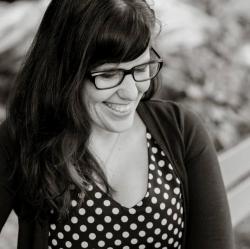
Howdy! My name is Katy Atchison and I'm an Associate Editor for Broke-Ass Stuart.
I want to take the time to say thank you for supporting independent news media by reading BrokeAssstuart.com. Supporting independent news sources like Broke-Ass Stuart is vital to supporting our community because it amplifies the voices of a wide variety of diverse opinions. You also help support small businesses and local artists by sharing stories from Broke-Ass Stuart.
Because you're one of our supporters, I wanted to send over a pro-tip.
Our bi-weekly newsletter is a great way to get round ups of Broke-Ass Stuart stories, learn about new businesses in The Bay Area, find out about fun local events and be first in line for giveaways.
If you’d like to get our newsletter, signup right here, it takes 5 seconds.


